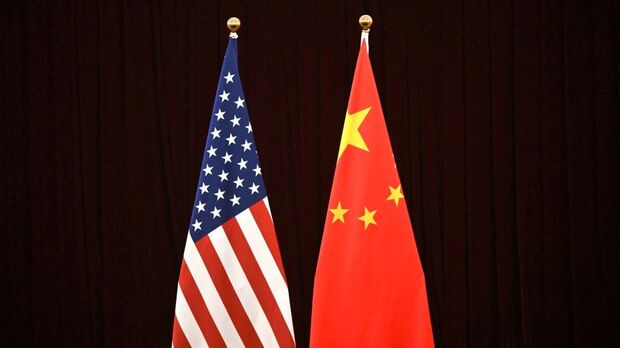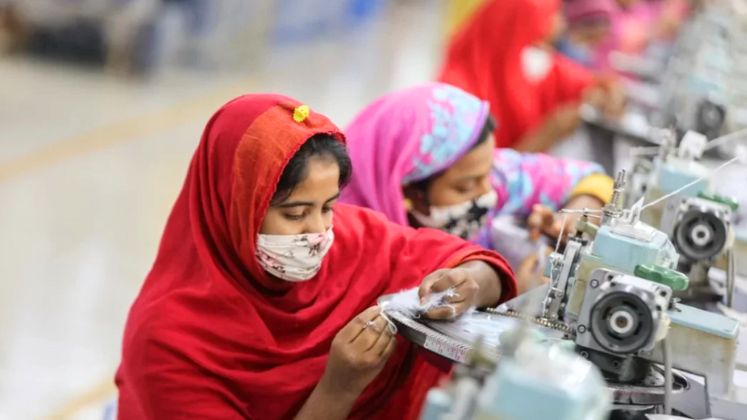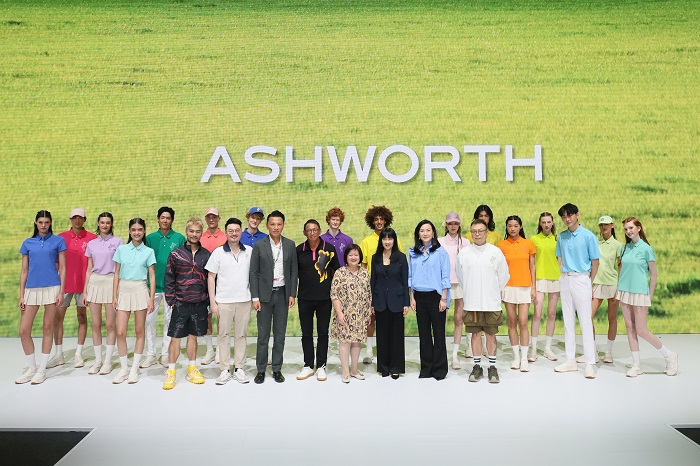FW
Egypt is trying to encourage public spinners and exporters to purchase Egyptian cotton instead of imported cotton. They will be encouraged by subsidies. Farmers will also be presented subsidized seeds and fertilizers.
About 350 million EGP of the financial allocation will be directed to subsidize the public and private sectors. The remaining 150 million EGP will be directed to supporting re-running the bankrupt spinners, and revitalizing the sector as a whole. This new decision is expected to revitalize the sector as a whole, comprising farmers, cotton workers, merchants, and exporters, increase Egypt’s revenues of cotton, and re-run the halted factories.
Egyptian cotton was shunned because of its high prices. The price of Egyptian cotton was 1,300 EGP per kantar while imported cotton was 750 EGP per kantar. Egyptian cotton is extra long staple. These plants were introduced to Egypt in the nineteenth century and developed as a cash crop. The plant is tropical and grows as a small, bushy tree requiring high humidity and rainfall. It contains the chemical gossypol, reducing its susceptibility to insect and fungal damage.
Cotton from Egyptian fibers is more breathable and becomes softer over time with use. It produces less lint and will not pill. This high quality fiber is long and narrower than other cottons, allowing thread counts of up to 1,000 per sq. inch. This provides a lighter weight and extremely strong, long-lasting durability.
An advisory committee of the Ministry of Textiles and jute has urged the Bangladesh Bank (BB) to ensure fresh working capital for private jute millers, keeping their outstanding loans along with five years’ interest in a blocked account. The advisory committee also urged banks to set the cut-off date on June 30, 2014, instead of December 31, 2013, in case of blocked accounts.
The committee took the decision in a bid to salvage the ailing jute industry facing liquidity crisis that put most of the mills in dire straits. The situation has become aggravated as export earnings from jute and jute goods have fallen due to decline in overseas demand. To overcome the crisis, the meeting highlighted the urgency for refinancing jute millers and urged the BB to introduce the block account facilities to millers to keep the sector alive.
Millers have urged the government to provide blocked account facilities to private jute mills and allow fresh loans. The finance ministry also advised the BB to provide fresh loans to private jute millers. It directed the central bank to keep their outstanding loans along with their five years’ interest, taken until June 30, 2011, in a blocked account at 8.0 per cent interest with10 years’ re-payment facilities.
Countries like Bangladesh and China stand to lose a huge amount of business if the Transpacific Partnership (TPP) comes through. Some of the signatories are: Australia, Canada, Japan, Malaysia, Mexico, New Zealand, the United States and Vietnam. TPP is a proposed agreement between 12 Asia-Pacific nations. It’s aimed at realising the vision of a free trade area in the Asia-Pacific and opening new trade and investment opportunities for the Asia-Pacific region.
This means countries like Bangladesh, excluded from TPP, will face high tariff barriers for their exports to the region. China would be the biggest loser, as it stands to miss out on business worth $2.09 billion a year. Although Bangladesh is not directly linked with the TPP, it will still be affected as some of the members of the deal are competitors of Bangladesh.
Vietnam, for instance, is a major competitor of Bangladesh for garment exports to the US market. Vietnam enjoys lower tariff, at 8.38 per cent, while Bangladesh pays 15.61 per cent duty on exports of garment items to the US market. If Vietnam enjoys duty-free benefit under the TPP, its competitiveness will increase further to the US market while Bangladesh's competitiveness will decline further.
Global buyers are looking at Myanmar as a production hub. China is facing rising costs and labor shortages. There are concerns over red tape in Vietnam as well as sometimes fatal labor unrest in Cambodia. Myanmar also allows 100 per cent foreign investment in the garment industry as well as joint ventures with existing manufacturers and potential ones.
Outsourcing labor to Myanmar offers significant cost savings to western manufacturers. The country is expected to receive $4 billion in foreign investment this year following three consecutive years of record-breaking growth as the industry is poised to become a major player in the global garment supply chain. The EU’s inclusion of Myanmar in its Generalised Scheme of Preferences last year also allows Myanmar garments and footwear unfettered access to the world’s largest market.
The country has a long history of making yarn, fabrics and garments. Its key export markets are Japan and South Korea with the rest going to Brazil, Argentina, South Africa and Turkey. Since the US has planned to lift most trade sanctions on Myanmar, garment manufacturers anticipate a lot of demand in coming years. Nineteen foreign companies entered Myanmar’s garment industry in 2012 and some of Thailand’s top garment manufacturers are planning to shift to Myanmar.
Retail agent IKEA is aiming to secure 100 per cent cotton from more sustainable sources by the end of 2015 as it looks to broaden its impact and make sustainable cotton a mainstream commodity. IKEA has increased the use of sustainably sourced cotton in its products to 72 per cent, up from 34 per cent in 2012.
Cotton is one of the most important raw materials for IKEA, and it works actively to promote better cotton growing methods. IKEA wants the cotton used in IKEA products to be produced in a sustainable manner, taking into consideration both people and the environment. Conventional cotton growing and processing consumes large amounts of water and chemicals. Together with WWF, IKEA is actively involved in developing better cotton cultivation practices to increase the volume of cotton produced in an environmentally friendly way.
The IKEA and WWF cotton projects are based on hands-on training in the field. Farmers see and experience the benefits of changing the way they grow cotton, and successful farmers act as inspiration to others. IKEA's partnership with WWF has been pivotal in promoting Better Cotton, and the two organisations are now planning to scale up sustainable cotton production to make Better Cotton a mainstream, affordable commodity.
www.ikea.com/ms/en_GB/about_ikea/our_responsibility/cotton/
View Premium Selection Munich took place July 15 to 16. This year the show was at a new avenue. The event showcased Autumn/Winter 2015-16 fabrics, denim and sportswear and accessories. There was 83 per cent increase in visitor turnout. The portfolio was extended to 300 collections.
This fair is the official kick-off to the season in the European trade fair calendar. Designed as a preview textile fair concept, View offers the international apparel industry at this early point in time a unique and inspiring selection of ranges. It attracted numerous buyers and designers working for renowned and global brands. For the first time the extended denim and sportswear segment also brought well-established producers to the show. <br/>
Exhibitors present themselves in a high-end setting and serve key accounts from the German-speaking region and neighboring European states at one and the same place. Interacting with their customers, they obtain key feedback, which they can incorporate into the final development of their fabric collections over the ensuing few weeks.
The next View Premium Selection will showcase Spring/Summer 2016 trends and will be held on December 9-10, 2014.
viewmunich.com/Press-announcements-view.html
To curb dependence on imports, and to establish a strong foothold in the European market Do Van Hau, GM, Vietnam Oil and Gas Group (Petrovietnam) and Le Tien Truong, DG, Vinatex recently met to discuss business in the first six months of 2014. They also discussed various ways of promoting mass consumption of products, particularly cooperation in the production of fibres, and the supply of polyester fibres to the textile industry.
Vinatex aims to gradually increase the quantity of domestic raw materials in textile end-products meant for exports as it would amount to increased profits and foreign currency for the country as it has invested in raw material production for its garment sector, in light of the expected trans-pacific partnership (TPP) and other agreements, which follow yarn-forward principle for eligibility of garments to avail duty-free facility.
Vietnam may sign an FTA with the European Union this year, which would provide many advantages for Vietnam’s export products, especially textiles. Vietnam is also considering signing an FTA with the Customs Union of Russia, Belarus and Kazakhstan.
www.vinatex.com
Plans to privatise state-owned Bangladesh Jute Mill Corporation are meeting with resistance from workers, who held demonstrations and rallies. Their protests were followed by a strike by private sector jute mill workers, demanding payment of wage arrears and the reopening of closed factories.
The Bangladesh jute industry, which makes materials for bags and sacks, is in crisis because of a sharp decline in export markets. The International Monetary Fund and World Bank are insisting on privatisation and restructuring, which means retrenching workers. Between 1990 and 2005, an estimated 1,20,000 BJMC workers lost their jobs. The BJMC has 26 jute mills. Privatisation of state-owned enterprises, such as the BJMC, is part of a broader economic restructuring and austerity program, prepared under the direction of the IMF and unveiled in the budget handed down in June. Apart from other restructuring and austerity measures, IMF reiterated its requirement for a widening of the value added tax.
Jute and jute-related industries once made up 80 per cent of Bangladesh’s foreign currency earnings, but they have declined since the 1980s. Political instability in major jute importing countries such as Syria, Iraq, Sudan and Egypt has lowered demand substantially.
The jute workers’ protests point to rising class tensions in Bangladesh, amid the deepening impact of the post-2008 global recession.
www.bjmc.gov.bd/
The spinning industry in Pakistan has been adding a record number of spindles. After the addition of over 1.6 million spindles, the number of spindles in the country would increase to 13.6 million. This is so in spite of the acute power and energy shortage facing the spinning industry in Pakistan.
The addition of spindles in the industry during acute power shortages gives credence to the view that the spinning industry can generate power on its own. Industries in the spinning sector say their bigger problem is not the energy crisis but the 10 per cent increase in the rupee’s value against the dollar. Pakistan is already producing surplus yarn, which it has to export because local weavers lack the capacity to use that yarn. With the addition of 1.6 million spindles the production of yarn would be further enhanced.
From 2006 to 2013 China added 49.17 million spindles and 378,363 shuttle-less looms. India during the same period increased its spinning capacity by 18.42 million spindles, adding 46,881 shuttle-less looms. During the same period Pakistan added 2.72 million spindles and 5,644 shuttle-less looms in its textile industry. Bangladesh increased the number of spindles by 2.96 million and its shuttle-less looms by 30,204.
Cotton is a major world commodity, accounting for almost half of textile production. The crop accounts for 10 per cent of global pesticide use and is grown in about 80 countries around the world. Cotton also needs a lot of water. However, through the Better Cotton Initiative (BCI) started by Ikea and the World Wildlife Fund (WWF) in 2005, farmers are reducing their pesticide, artificial fertilizer and water use.
Both are founding members of the BCI and the purpose of the initiative is to develop sustainable cotton production methods. BCI started with just 500 farmers, but now has 43,000 farmers in India and Pakistan alone using more sustainable cotton farming techniques, as the latest BCI report shows. Project farmers in Pakistan were the first in the world to produce licensed Better Cotton.
Several case studies have proved that working with BCI helps farmers. The BCI report predicts that Better Cotton, cotton produced and licensed according to BCI criteria, could become a “mainstream global commodity before 2020.” The goal is to make Better Cotton 30 per cent of global cotton production by 2020, which would mean working with five million farmers around the world. In order to achieve that goal, much more quantities of Better Cotton will need to be produced in China, the biggest producer and consumer of cotton, the report concludes. The US will also need to ramp up production, as it is the biggest exporter of cotton.
Ikea’s goal is for 100 per cent of the cotton it uses to come from more sustainable sources by the end of 2015. In 2013, more than two-thirds (72 per cent or 79,000 tons) of the predicted total cotton need for Ikea products came from more sustainable sources. As of March 15, 2014, almost 57,000 tons of licensed Better Cotton lint, mostly from Pakistan and Africa, had been purchased or 50 per cent of the estimated need for 2013.
Bettercotton.org












